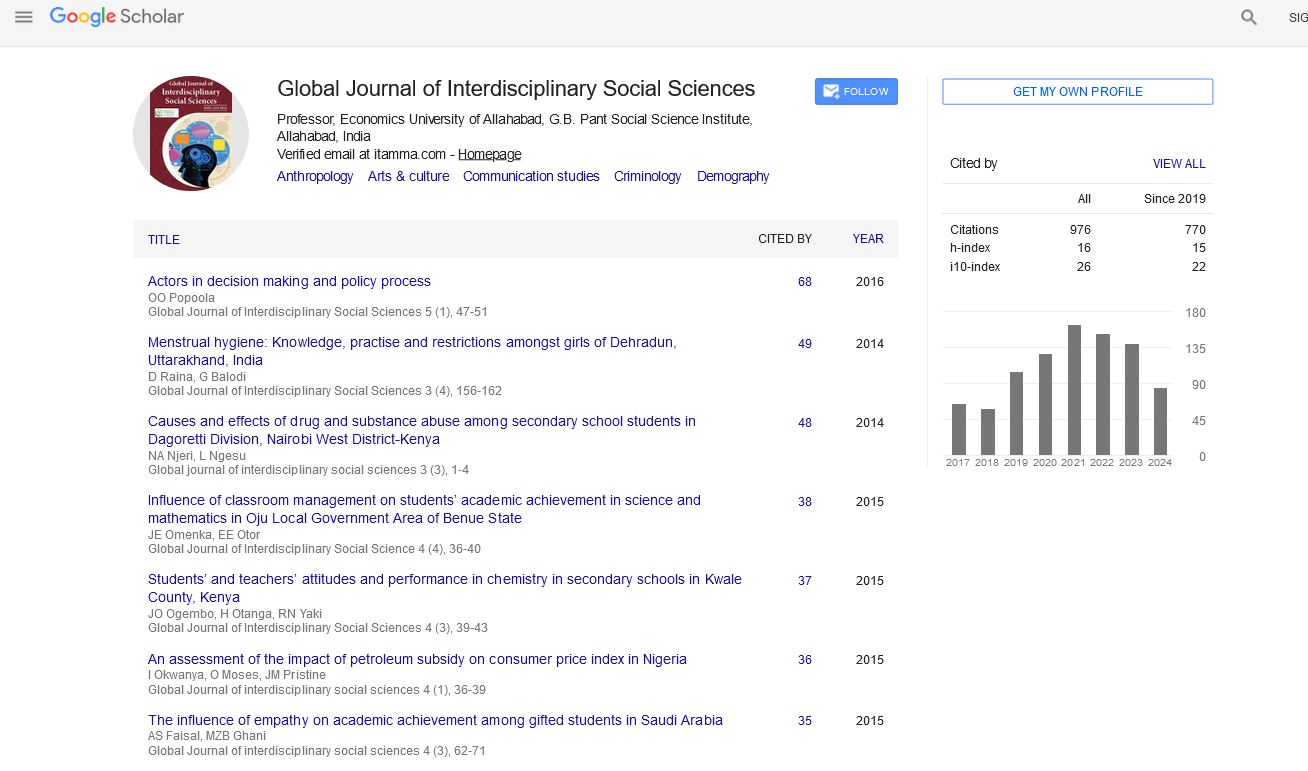Indexed In
- JournalTOCs
- Google Scholar
Useful Links
Share This Page
Journal Flyer

Open Access Journals
- Agri and Aquaculture
- Biochemistry
- Bioinformatics & Systems Biology
- Business & Management
- Chemistry
- Clinical Sciences
- Engineering
- Food & Nutrition
- General Science
- Genetics & Molecular Biology
- Immunology & Microbiology
- Medical Sciences
- Neuroscience & Psychology
- Nursing & Health Care
- Pharmaceutical Sciences
Commentary - (2022) Volume 11, Issue 2
Importance of Inflation in the Economy
Eric Danny*Received: 02-Mar-2022, Manuscript No. GJISS-22-16286; Editor assigned: 04-Mar-2022, Pre QC No. GJISS-22-16286(PQ); Reviewed: 18-Mar-2022, QC No. GJISS-22-16286; Revised: 23-Mar-2022, Manuscript No. GJISS-22-16286(R); Published: 31-Mar-2022, DOI: 10.35248/2319-8834/22.11.018
Description
Inflation can be described in general the inventory control or inventory management is concerned with the formulation of models to determine the optimal stock of commodities to meet the future demand. It is well known that if the inventory is not properly maintained many activities amount to an appreciable depreciation of resources. But good planning and design could minimize the ageing and wastage of inventories. In general the inventory management is mostly perspective theory. Inventory management is omnipresent for many fields of business. Inventory models provide the basic structure for inventory management. Targeting money supply growth in the economy was taken into consideration to offer a credible anchor, however its relation to price inflation have become increasingly unstable as the improvement of financial markets received momentum. Economists have long realised the significance of organising a credible nominal anchor for inflation expectations.
However, in many practical situations the loss may be due to deterioration in addition to the demand. Along with several other assumptions it is customary to make assumptions on the life time of the commodity along with the demand and replenishment for developing the inventory models. The inventory models can be categorized into two categories namely, finite life time models and infinite lifetime models. The finite lifetime models can be further classified into fixed lifetime models and random lifetime models. Among the inventory models, the random lifetime models play a significant role in developing optimal operating strategies of the system. Most of the Economic Order Quantity (EOQ) models assume that items can be stored indefinitely to meet the future demands. However, certain types of commodities either deteriorate or become obsolete in the course of time and hence these are unusable. For example, the commonly used goods like fruits, vegetables, meat, foodstuffs, alcohol, gasoline, radioactive substances, photographic films, electronic components, etc., where deterioration is usually observed during their normal storage period. Much work has been reported regarding Economic Order Quantity (EOQ) models for deteriorating items one of the basic assumptions of the classical EOQ model is that the various costs associate with the model are constant and the money value over the period of time is unchanged.
Conclusion
That is the inflation of the economic situation is ignored. But in many business firms the change in money value has significant influence on economic order quantity and monitoring of inventory levels. Also in practice the supplier offer their customers a certain period without interest during the permissible delay period. Analysing inventory models with permissible delay in payments under inflation having Weibull rate of decay with different streams of demand patterns. These empirical results recommend that inflation targeting seems largely to have been a success. Inflation has been brought down, even though it has really fallen globally. Inflation in the targeting global countries is presently similar to that in non-focused commercial countries which can be usually taken into consideration to conduct a successful monetary policy.
Citation: Danny E (2022) Importance of Inflation in the Economy. Global J Interdiscipl Soc Sci. 11:018.
Copyright: © 2022 Danny E. This is an open-access article distributed under the terms of the Creative Commons Attribution License, which permits unrestricted use, distribution, and reproduction in any medium, provided the original author and source are credited.

